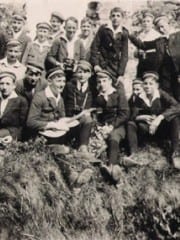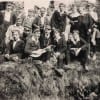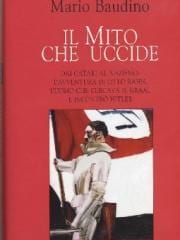Wandervogel
Monument to Rahn in Burg Waldeck (Hunsrück). Rahn and Wandervogel
V.: I have a question. Richard mentions the monument to Otto in the forest of the Hunsruck. Have anyone some pictures? Or the precise coordinates? I have not found any mentions about.
By the way - I don't like the inscription on it “Caution – these ways lead astray!”
It's not so simple)
Richard Stanley: Ave V. - You are right, mon frere. It is not so simple! The monument is a round stone bank in the courtyard of the seat of the Nerother Bund, a deeply conservative branch of the German youth movement known as the 'Wandervogel' whose headquarters can be found in Burg Waldeck in the forest of Hunsruck. As far as I know there are no photographs available on the web of this curious construction.
Otto Rahn y la Búsqueda Nazi por el Secreto de los Cátaros
La Berlin de entreguerras era una ciudad conocida en toda Europa por su sub-cultura bohemia y sus jovenes intelectuales. Entre los personajes que ardientemente celebraban los abundantes «ismos» que estaban fracturando las viejas certezas ideologicas, las cuales habian compactado el siglo XIX, pocos individuos eran mas coloridos que un joven de ojos verdes y cabellos oscuros llamado Otto Rahn. Su figura delgada, envuelta en un caracteristico abrigo negro y sombrero tiroles, arrojaba una larga sombra desde esos anos sombrios, una «gran silueta» alrededor de la cual se han acumulado los mitos mas extravagantes. El fue considerado igualmente como mason, rosacruz, luciferino, y un agente de la Sociedad Thule. Como lo plantea el autor Phillip Kerr, los contemporaneos de Rahn no se habrian sorprendido de ver «la Dama Escarlata y la Gran Bestia salir volando desde la puerta del frente» de su apartamento en Tiergartenstrasse. Uno de sus companeros de la Orden Negra de Heinrich Himmler comento en un memorandum interno que el «medio sospechaba que Rahn tenia relaciones con el pueblo pequeno».
Otto among a group of teenagers, Giessen, appr. 1919
Otto on the photograph is about 15 years old. He stands in the center, with the hand of his comrade on the left shoulder.
It is believed this group of teenagers are members of the Wandervogel scouting movements.
Photo from Richard Stanley archive
Baudino Mario - IL MITO CHE UCCIDE. Dai catari al nazismo: l'avventura di Otto Rahn l'uomo che cercava il Graal e incontro Hitler
Alla fine degli anni Venti un giovane e brillante storico tedesco, Otto Rahn, giunge per la prima volta in Provenza, sulle tracce del Santo Graal, la mitica reliquia la cui storia è strettamente connessa con quella dell'eresia e della persecuzione dei càtari durante il Medioevo. Attraverso i meandri di questa vicenda, avvolta tra realtà e leggenda, l'autore ripercorre con ampio respiro narrativo una delle pagine più fosche della storia europea. Rahn finirà per essere cooptato dai dirigenti nazisti che intendono rilanciare il mito "ariano" del Graal, promuovendo vere e proprie spedizioni di ricerca anche dopo la misteriosa morte del giovane studioso, avvenuta nel 1938, a soli trentaquattro anni.
Dati 2004, 256 p., rilegato
Editore Longanesi
Raiders of the Lost Grail
Berlin between the wars was a city known throughout Europe for its bohemian subculture of young intellectuals. Amongst the personalities who hotly debated the many modernist “isms” that were fracturing the old ideological certainties which had glued together the 19th century, few individuals were more colourful than a dark-haired, green-eyed young man named Otto Wilhelm Rahn. His gaunt figure, swathed in characteristic black coat and fedora, casts a long shadow out of those twilight years, a ‘great silhouette’ around which the most extravagant myths accrued. He was variously said to be a Mason, a Rosicrucian, a Luciferian, an agent of the Thule Gesellschaft, an initiated Cathar and even the leader of an obscure, international secret society. As author Philip Kerr puts it, Rahn’s contemporaries might not have been surprised to see “the Scarlet Woman and the Great Beast come flying out of the front door” of his apartment on Tiergartenstrasse. One of his Nazi peers in Heinrich Himmler’s Black Order remarked in an internal memo that he “half suspected Rahn of being in league with the little people”. To this day, it is widely believed that this enigmatic young man knew the whereabouts of one of the most sacred relics in all Christendom – the Most High Holy Grail. But the truth is stranger still…





Comentarios recientes
hace 13 años 41 semanas
hace 13 años 42 semanas
hace 13 años 42 semanas
hace 13 años 42 semanas
hace 13 años 45 semanas
hace 13 años 51 semanas